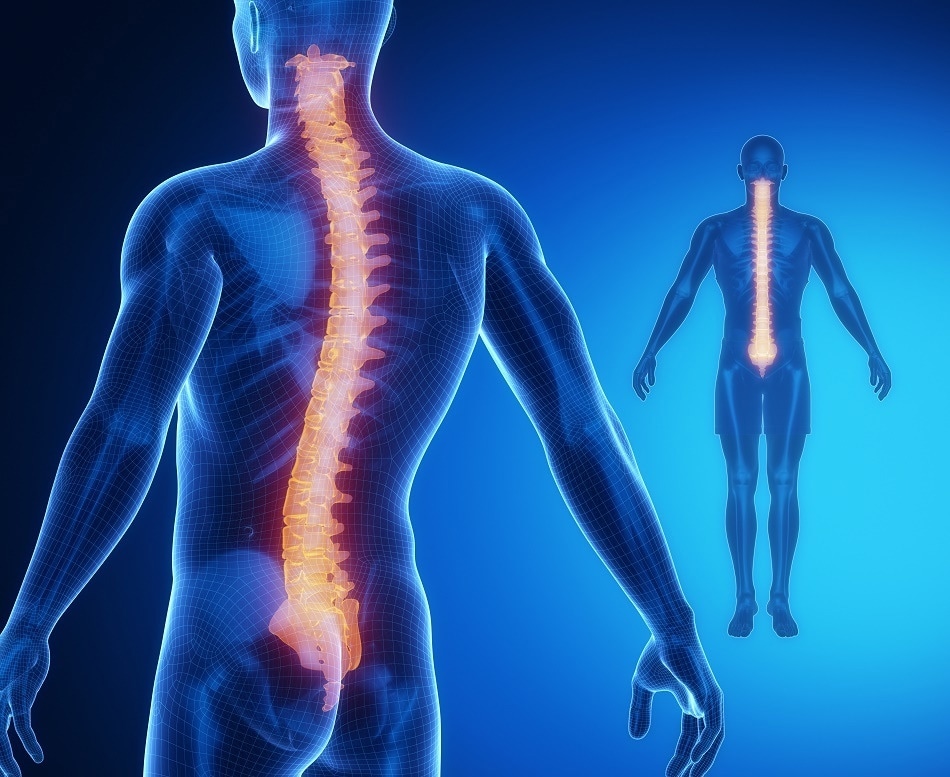
Image Credits: CLIPAREA | Custom media/shutterstock.com
Spinal cord damage can result in reduced sensation and even paralysis below the location of the injury because the body can't restore damaged nerve fibers. While nerve fibers are capable of regrowth, they don’t reestablish after a spinal injury because they're obstructed by scar tissue that forms around the injury.
Although there is no magic bullet solution to treat spinal cord injuries, nanotechnology has opened new pathways for treating the condition. In particular, researchers have been using nanomaterials to create a supportive framework that might be used in conjunction with other treatments, including stem cell therapy, medications or other types of medical interventions.
In one particularly promising development, researchers were recently able to use graphene nanoribbons and a common polymer to develop a material they called Texas-PEG that could be used to heal spinal injuries or even reconnect a severed spinal cord.
To achieve their discovery, study researchers from Rice University developed a special kind of graphene nanoribbon that could be used for medical purposes. These nanoribbons are very soluble in polyethylene glycol (PEG), a polymer gel commonly used in surgical procedures, pharmaceuticals and in other medical applications. When the biocompatible nanoribbons have their ends functionalized with PEG chains and are then combined with PEG, they become an electrically viable network that allows the ends of a severed spinal cord to reconnect.
Experiments have shown graphene facilitates the growth of neurons and the unique form of carbon is also highly conductive, which is useful for the transmission of electrical signals along the spinal cord.
According to study team member and Rice chemist James Tour, other labs are experimenting with growing neurons, but on water-soluble graphene oxide, which is less conductive than graphene, or non-ribbonized forms of graphene.
We’ve developed a way to add water-solubilizing polymer chains to the edges of our nanoribbons that preserves their conductivity while rendering them soluble, and we’re just now starting to see the potential for this in biomedical applications.
James Tour, Chemist, Rice University
The chemist added that using graphene ribbons means much smaller amounts of graphene are necessary to establish a conductive pathway that can link damaged spinal cords. Texas-PEG is just 1 percent nanoribbons, but that amount is sufficient to create a conductive framework through which a spinal cord can recouple.
In experimental trials, conducted at Konkuk University in South Korea, Texas-PEG was successful in re-establishing function in a rodent with a severed spinal cord. The study team said their novel material permitted motor and sensory signals to bridge the gap just 24 hours after achieving transection of the spinal cord, as well as a nearly perfect return of motor control after two weeks.
This is a major advance over previous work with PEG alone, which gave no recovery of sensory neuronal signals over the same period of time and only 10 percent motor control over four weeks.
James Tour, Chemist, Rice University
Expanding on previous research by Italian neurosurgeon Sergio Canavero that revealed PEG’s ability to promote the binding of cell membranes, the study team hypothesized that nanoribbons might be able to add electrical conductivity and direction for neurons as they bridged the gap between severed areas of the spinal cord.
[The study is an] exciting neurophysiological analysis. [The study] is not a behavioral or locomotive study of the subsequent repair. The tangential singular locomotive analysis here is an intriguing marker, but it is not in a statistically significant set of animals.
James Tour, Chemist, Rice University
The current phases of the study are looking at the locomotive and behavioral skills with statistical relevance to determine if these traits follow the favorable results seen in the recent study.
Sources and Further Reading
Disclaimer: The views expressed here are those of the author expressed in their private capacity and do not necessarily represent the views of AZoM.com Limited T/A AZoNetwork the owner and operator of this website. This disclaimer forms part of the Terms and conditions of use of this website.